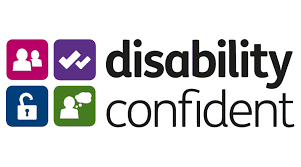The Challenges of Hiring in the Life Sciences Industry
The Challenges of Hiring in the Life Sciences Industry and How Contingent Workforce Solutions Can Help
Introduction
The Life Sciences industry, including Medical Devices, Pharmaceuticals, and Biotechnology, faces a range of complex hiring challenges. Rapid innovation, stringent regulatory requirements, and talent shortages make recruitment a critical yet demanding function. To address these obstacles, many organizations are turning to contingent workforce solutions to build a flexible and skilled talent pool. This blog explores key hiring challenges in Life Sciences and how leveraging contingent workers can help companies stay agile and competitive.
Key Hiring Challenges in the Life Sciences Industry
Talent Shortages in Specialised Roles
The Life Sciences sector requires highly specialized professionals, such as clinical researchers, regulatory affairs experts, and biostatisticians. Due to the industry's fast-paced nature and evolving technologies, finding candidates with the right expertise can be time-consuming and expensive.
Regulatory and Compliance Complexity
Hiring in Life Sciences involves navigating complex regulatory environments across different regions. Strict compliance with Good Manufacturing Practices (GMP), FDA, EMA, and ISO standards makes recruitment even more challenging. Employers must ensure that their workforce is well-versed in the latest regulations to avoid compliance risks.
Evolving Market Demands and Project-Based Work
Life Sciences companies must quickly adapt to changing market conditions, new drug development pipelines, and fluctuating production demands. As a result, they often require workforce flexibility to scale up or down based on project needs.
Long Hiring Cycles and High Costs
Due to the highly specialized nature of Life Sciences roles, hiring cycles are often lengthy. Recruiting, onboarding, and training permanent employees can be costly, especially when companies need immediate expertise for time-sensitive projects.
How Contingent Workforce Solutions Can Help
Filling Skill Gaps Quickly
By leveraging a contingent workforce, Life Sciences companies can quickly access specialized talent without the lengthy hiring process. Temporary workers, consultants, and contract professionals bring industry expertise, allowing companies to maintain productivity without delays.
Enhancing Regulatory Compliance
Contingent workforce providers often have extensive experience in ensuring compliance with industry regulations. They can help organizations source qualified candidates who are already familiar with GMP, FDA, EMA, and other compliance requirements, reducing legal and operational risks.
Flexibility for Project-Based Work
Pharmaceutical, Biotech, and Medical Device companies frequently require workforce scalability to align with clinical trials, product launches, and regulatory audits. A contingent workforce allows businesses to scale their teams up or down without long-term commitments, making operations more cost-effective.
Reducing Hiring Costs and Time-to-Hire
Engaging contingent workers eliminates the need for lengthy recruitment processes and high onboarding costs. Organizations can tap into an existing network of highly skilled professionals, ensuring faster hiring cycles and cost savings.
Conclusion
Hiring in the Life Sciences industry comes with unique challenges, from skill shortages and regulatory complexity to long hiring cycles and evolving market needs. By leveraging contingent workforce solutions, companies in Pharmaceuticals, Biotech, and Medical Devices can address these challenges effectively. A flexible, skilled, and compliant workforce enables organizations to remain agile, competitive, and prepared for the industry's rapid advancements.






